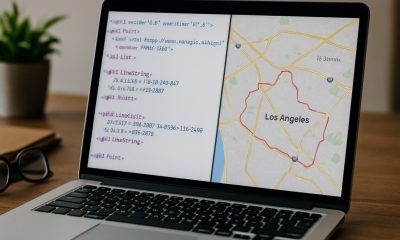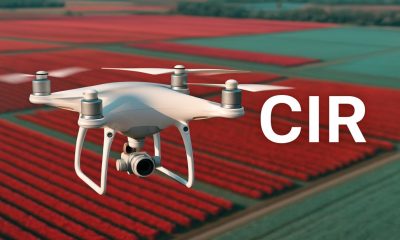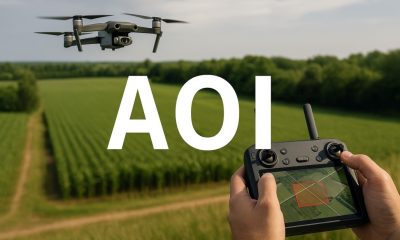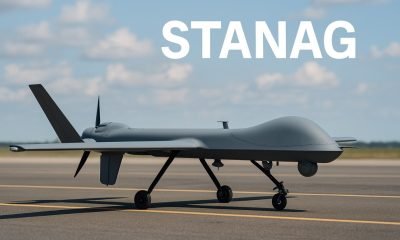- Acronym Guide
- AAM
- ABS
- AC
- ACAS
- ADS-B
- AFAC
- AGL
- AI
- AIM
- ALS
- AM
- AMA
- ANSP
- AOI
- APPI
- AUV
- AUVSI
- ARPAS-UK
- ASTM
- ATC
- BVLOS
- CAA
- CAAC
- CAB
- CASA
- CATT
- CBO
- CBR
- CBRN
- CDMA
- CDR
- CFR
- CIR
- COA
- COMINT
- CORS
- COTP
- COTR
- CPTED
- CV
- C2
- DAA
- DEM
- DFI
- DFS
- DGCA
- DHS
- DOD
- DPA
- DPEs
- DRG
- DRO
- DSM
- DSMX
- DSP
- DSSS
- DTM
- EASA
- EFT
- EO
- EOD
- EO/IR
- ELINT
- EMI
- ESC
- EVLOS
- eVTOLs
- FAA
- FCC
- FCS
- FHSS
- FICCI
- FLIR
- FOB
- FOV
- FPS
- FPV
- GBDAA
- GCP
- GCS
- GDPR
- GML
- GNSS
- GPS
- GSD
- GVC
- HDR
- HOGE
- IACRA
- ICAO
- ICS
- IMU
- INS
- IR
- ISA
- ISR
- ITU
- JARUS
- LAAMS
- LAANC
- LAATM
- LAI
- LBA
- LIDAR
- LOS
- LSALT
- MAC
- MAVLink
- MLIT
- MMS
- MSL
- MTOM
- NDAA
- NCSL
- NFZ
- NIST
- NMEA
- NOTAM
- NPA
- NPRM
- NTIA
- OBIA
- OEM
- OFDM
- OOP
- PASM
- PAV
- PCV
- PdM
- PEC
- PIC
- PID
- PIPL
- PLD
- PM
- PN
- PPK
- PPS
- PSM
- PWM
- UAM
- UAOP
- UAS
- UASTM
- UAV
- UCAVs
- UHD
- UHF
- USV
- UTM
- RAIM
- RCC
- RCS
- RFI
- ReOC
- RePL
- RMS
- ROI
- RPAS
- RPC
- RTH
- RTK
- SaR
- SAR
- SARP
- SBAS
- S.Bus
- SBIR
- SEDENA
- SfM
- SFOC
- SIGINT
- SLAM
- SMS
- SORA
- STANAG
- STTR
- sUAS
- TCAS
- TCCA
- TFR
- TIN
- TOF
- TP
- TPS
- TSA
- VHF
- VLOS
- VTOL
Drone Acronyms
What is LOS (Line of Sight) & How Does it Work?
By
Jacob StonerTable Of Contents

Definition
LOS, or Line of Sight, refers to the direct, unobstructed visual connection between the drone and the operator during flight. Maintaining visual contact ensures that the pilot can monitor the drone’s position, orientation, and surrounding airspace to avoid collisions or other hazards. In drone operations, LOS is often a legal requirement, especially for manual flights and safety-critical inspections.
Usage
Line of Sight is essential during manual drone inspections, mapping missions, infrastructure surveys, and recreational flying. Operators are required to keep their drone within their unaided visual range—without relying on video feeds, binoculars, or spotters—unless specifically authorized for Beyond Visual Line of Sight (BVLOS) operations.
Relevance to the Industry
Maintaining Line of Sight is a fundamental safety measure that protects the drone, nearby people, and property. It ensures that pilots can respond immediately to unexpected obstacles, weather changes, or system malfunctions. For industries like construction, energy, and insurance—where close-up inspections are common—strict LOS adherence reduces risk and meets regulatory compliance under FAA, Transport Canada, and other aviation authorities.
How Does LOS (Line of Sight) Work?
Line of Sight ensures that a drone pilot maintains continuous, unaided visual contact with their aircraft throughout the flight. This direct visual connection allows the pilot to judge distance, orientation, altitude, and surrounding risks without relying solely on the drone’s onboard systems or video feed. Here’s how LOS works in practice:
Visual Monitoring of Drone Position and Attitude
Maintaining LOS allows the pilot to see where the drone is in relation to their position and to monitor changes in heading, pitch, roll, and yaw. This visual feedback is critical for safe maneuvering, especially during manual inspections that require tight, precise flight paths.
Environmental Awareness
Through LOS, pilots can observe environmental conditions around the drone, including nearby obstacles, changing weather patterns, incoming birds, or other aircraft. This real-time situational awareness cannot be fully replicated by relying only on first-person view (FPV) video feeds.
Immediate Response to Hazards
If a drone drifts off course, loses GPS signal, or faces an unexpected threat, the pilot’s ability to see the drone allows for immediate manual control adjustments. Quick corrective actions are crucial in preventing crashes or property damage.
Compliance with Aviation Regulations
Aviation authorities such as the FAA and Transport Canada require that drones remain within the pilot’s unaided visual line of sight during most flights unless a specific BVLOS authorization is granted. Maintaining LOS ensures legal compliance and contributes to safer integration into shared airspace.
Flight Planning for LOS
Before missions, pilots plan inspection routes or flight paths to ensure LOS can be maintained at all times. This might involve adjusting the operator’s position, using additional visual observers, or avoiding flight paths that pass behind obstacles like buildings, towers, or hills.
By combining direct visual monitoring with good planning and adherence to safety standards, LOS operations offer the highest level of situational awareness and control during drone missions, particularly when performing detailed manual inspections.
Example in Use
“During the bridge inspection, the pilot maintained clear line of sight (LOS) with the drone to navigate tight spaces safely without relying solely on the onboard camera.”
Frequently Asked Questions about LOS (Line of Sight)
Why is LOS important for drone flights?
Answer:
LOS enables the pilot to visually monitor the drone and its environment to detect obstacles, weather changes, or potential airspace conflicts.
It allows immediate manual intervention if the drone drifts, malfunctions, or encounters hazards, enhancing overall flight safety.
Are there exceptions to LOS rules?
Answer:
Yes, some jurisdictions allow Beyond Visual Line of Sight (BVLOS) flights, but only under strict regulatory approval.
BVLOS operations typically require special training, certifications, detect-and-avoid technologies, and detailed safety risk assessments.
What are common challenges in maintaining LOS during inspections?
Answer:
Obstacles like buildings, towers, or terrain can block visual contact.
Environmental factors such as fog, glare, or darkness make it difficult to see the drone.
Pilots must plan flight paths carefully and sometimes reposition themselves to maintain uninterrupted LOS.
For examples of these acronyms visit our Industries page.
As the CEO of Flyeye.io, Jacob Stoner spearheads the company's operations with his extensive expertise in the drone industry. He is a licensed commercial drone operator in Canada, where he frequently conducts drone inspections. Jacob is a highly respected figure within his local drone community, where he indulges his passion for videography during his leisure time. Above all, Jacob's keen interest lies in the potential societal impact of drone technology advancements.











